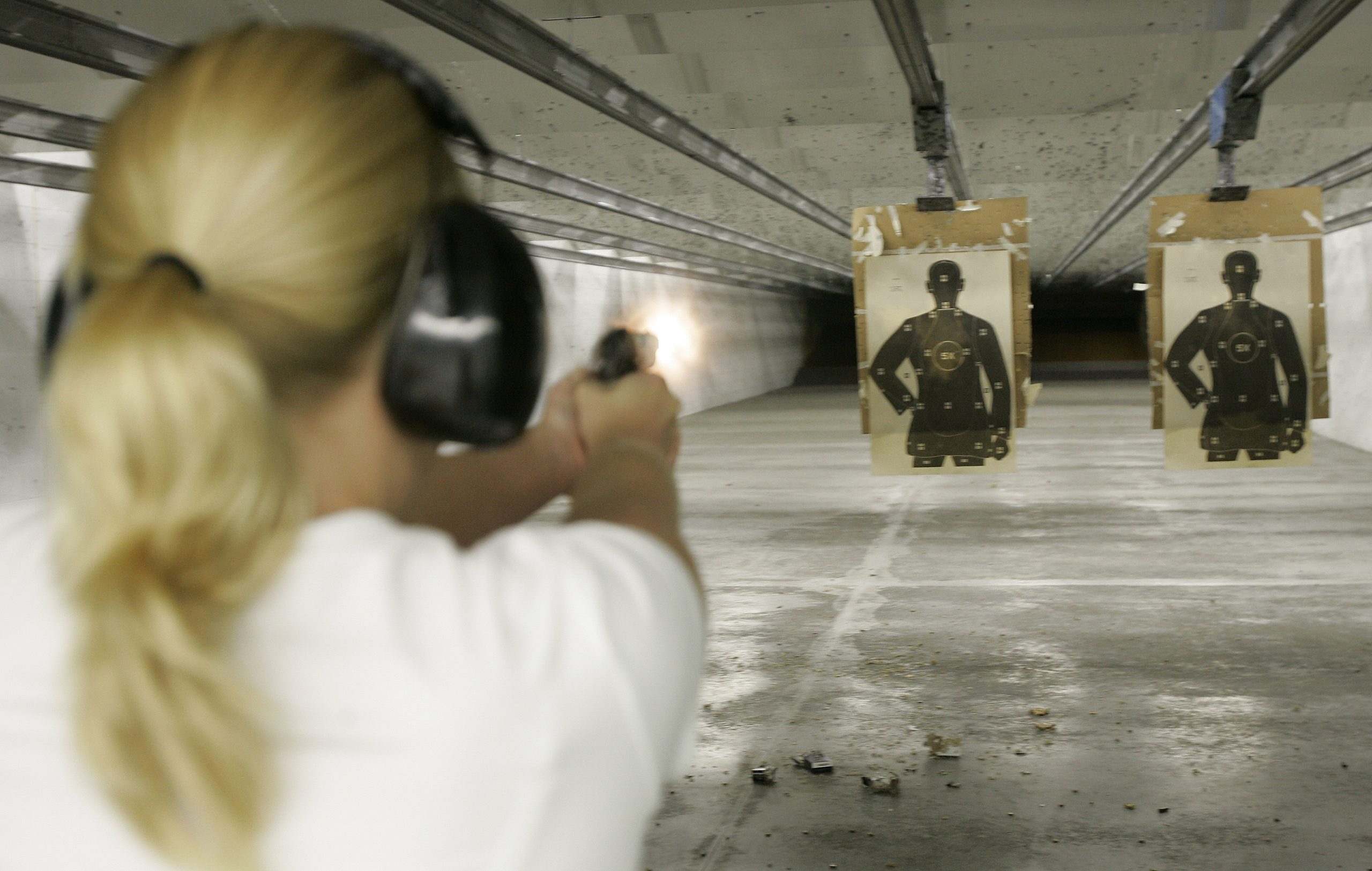The all-American pastime of squeezing off a few rounds at the range is riskier than many realize. A new analysis of 40 years of research demonstrates that gun range customers and staffers are at high risk of exposure to dangerous amounts of lead, from inhaling smoke and tiny bits of bullets that float through the air after crashing into targets.
The meta analysis of 36 studies conducted between 1975 and 2016, published in the journal Environmental Health examined the ways firing range patrons, employees, and their families are exposed to lead. It found that individuals who patronize or work at gun ranges had blood lead levels from between two and eight times the level of exposure deemed cause for serious concern by the federal Centers for Disease Control and Prevention. The review’s authors concluded that “firing ranges, regardless of type and user classification, currently constitute a significant and unmanaged public health problem.”
The quantity of lead in someone’s blood is typically measured in terms of micrograms per deciliter. There is no level of lead that is determined safe by the CDC, but most people accumulate trace amounts through environmental exposure. The average adult blood lead level for all Americans is 1.2 micrograms per deciliter. The CDC considers anything above 5 micrograms per deciliter “elevated.”
One study of employees at a California firing range evaluated as part of the new analysis found lead levels of 20 to 40 micrograms of lead per deciliter.
Lead exposure carries health risks for men, women, and children. Adults suffering from lead poisoning can experience tremors, high blood pressure, heart disease, and decreased kidney function. Pregnant women are put at higher risk of reduced fetal growth by lead. Children exposed to lead often have lower IQ and cognitive function and may have delayed puberty.
The elevated levels are present after just a day or two of shooting and can linger for months. In one of the studies reviewed, the mean lead level in a class of police cadets increased more than sixfold from 6 micrograms per deciliter of blood on the first day of training to more than 15 micrograms per deciliter after five days of training. Even 69 days after the training, the cadets’ blood level remained at an average of 9 micrograms per deciliter. An estimated one million American police officers train with guns at indoor ranges, according to the study.
“Nearly all [blood lead level] measurements compiled in this study exceed” the CDC’s maximum safe level, the study’s authors wrote.
Lead exposure at ranges can happen a variety of ways. When a round discharges, its primer releases a small amount of the metal as it burns. The smoke, if inhaled, can introduce lead into the bloodstream. Some ammunition uses lead projectiles — the bullet that is shot at a target. When it breaks up on impact, the metal is aerosolized. Even if lead particles — either from the primer or the bullet — are not inhaled, they can settle on skin or clothing, or in soil at outdoor ranges, which shooters can then ingest. If people who spend time at gun ranges don’t immediately change their clothes or wash their exposed skin after visiting, they also risk exposing the people they come into contact with to the metal.
The authors found that higher levels of lead exposure are associated with more frequent shooting, the use of higher-caliber ammunition, and indoor ranges, which can have poor ventilation.
Despite the risk to customers and employees, shooting ranges are largely free of health and environmental regulation beyond standard Occupational Safety and Health Administration rules. A 2014 investigation by the Seattle Times found gun range employees on the verge of organ failure, or suffering from loss of feeling in hands and feet. Despite this, in 2014 OSHA only inspected 201 of the more than 16,000 shooting ranges in the country.
The study’s authors called for ranges and their patrons to adopt a set of practices to reduce lead exposure, such as banning smoking and eating on premises, increased ventilation and airflow systems at indoor and outdoor facilities, and protective clothing that customers can wear while they shoot. The most important means of reducing this exposure, the authors said, would be the widespread use of lead-free primer and projectiles in ammunition.
One of the authors stressed that the research was not meant to take a position on firearms or criticize the activity of visiting the range.
“This is not an anti-gun paper,” Gabriel Filippelli, a professor of earth science at Indiana University-Purdue University, told the Indy Star. “It’s a pro lead-protection paper.”


